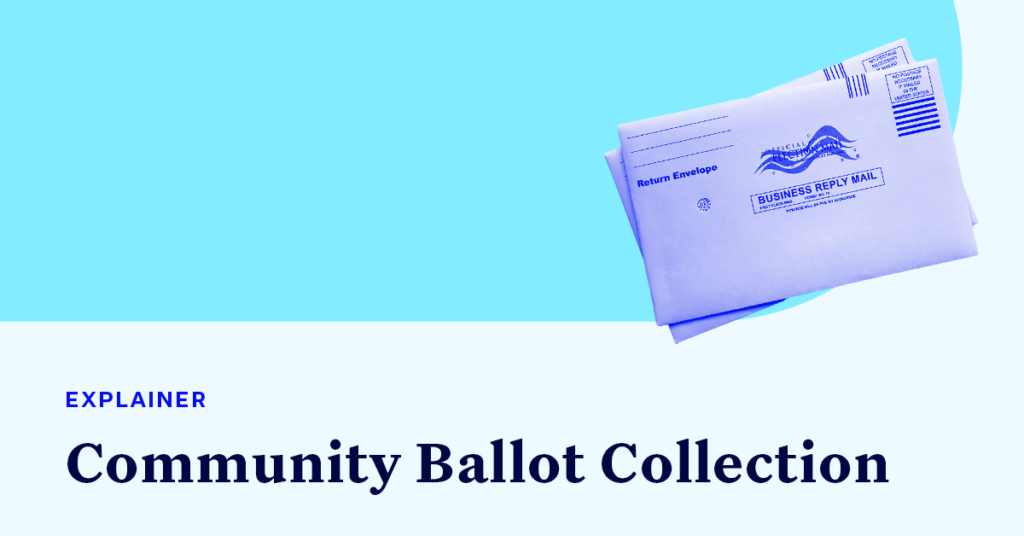Third-Party Ballot Collection, Explained

In many states, designated organizations, election officials or family members may collect a voter’s signed and sealed ballot and deliver the ballot to election officials on the voter’s behalf. This option, known as community ballot collection, provides voters with a safe and easy way to cast their ballots.
Why is community ballot collection so important?
Community ballot collection is a particularly important option for voters who are elderly, disabled or have limited access to transportation. It helps marginalized communities where high poverty rates, underdeveloped infrastructure and inflexible work schedules make it difficult for voters to submit their ballots on time. And, as we continue to face COVID-19, community ballot collection enables trusted community organizations to assist voters who are at high risk and unable to leave their homes.
As California Secretary of State Alex Padilla (D) explained, community ballot collection gives “voters the power to decide who they most trust to return their vote-by-mail ballot for them if they so choose.”
What does community ballot collection look like across states?
While some states allow for community ballot collection, other states have restricted the practice or prohibited it altogether. Several states severely limit the number of ballots someone providing ballot collection assistance may collect. In Montana, for example, a person may collect only up to six ballots. This restriction has imposed severe burdens on Native American voters in Montana — many of whom live in remote areas far from county elections officers with limited access to transportation and postal services and who had come to rely on community ballot collection to participate in elections. Other states prohibit ballot collection by community organizations altogether, cutting off crucial assistance from voters who need it most (in Alabama, voters can’t even have their family members return their ballots for them). While these prohibitions are allegedly in place to guard against election fraud, they instead impede voters from voting while doing nothing to make our elections safer.
It’s important to listen to the facts about ballot collection.
As any nonpartisan voting expert will tell you, there is little evidence that ballot collection leads to fraud. Those who seek to justify prohibitions on community ballot collection often point to Leslie McCrae Dowless Jr., who was indicted for allegedly destroying and altering absentee ballots in North Carolina. Yet Dowless’ alleged tampering was not part of any ballot collection efforts (North Carolina prohibits community ballot collection), nor did it resemble the lawful procedure used for ballot collection. In other words, the one data point used to attempt to legitimize prohibitions on community ballot collection doesn’t even apply.
How does ballot collection work?
Community ballot collection can be implemented and practiced securely. States that permit ballot collection require that ballots be signed and sealed when they are collected, which prevents a third party’s ability to tamper with the ballot. And failing to properly deliver ballots puts a person providing ballot collection assistance at risk of being convicted of a felony. Moreover, voters who vote by mail often have the option of tracking their ballots to ensure that they were submitted properly.
Ballot collection is a safe practice that does not require voters to have their ballots collected, but simply provides voters with the option to receive assistance if they wish, and choose someone they trust to submit their ballots for them.